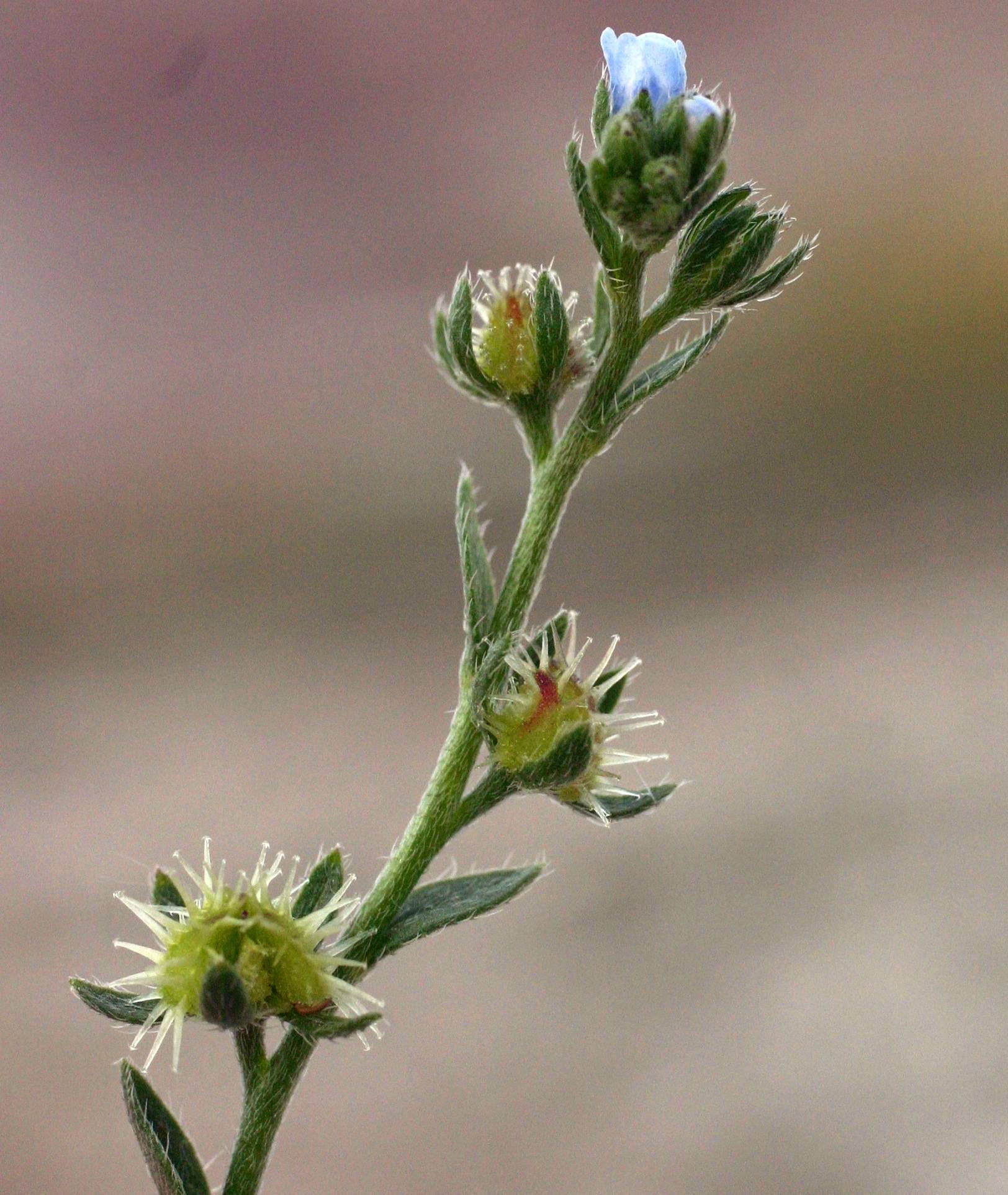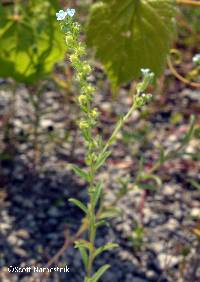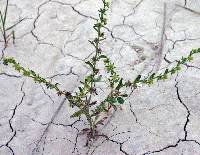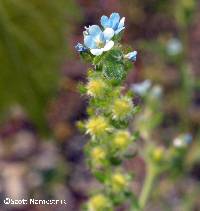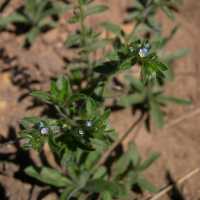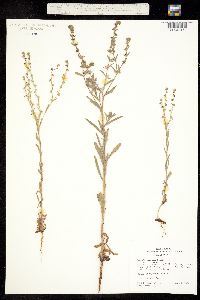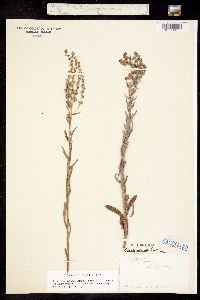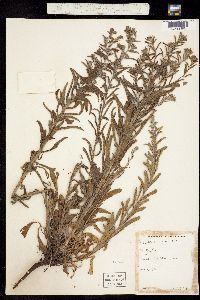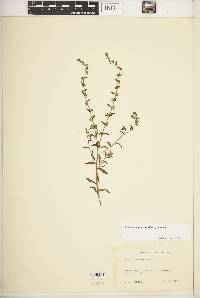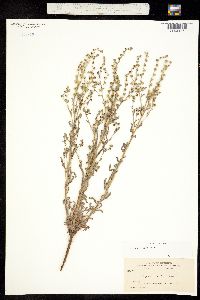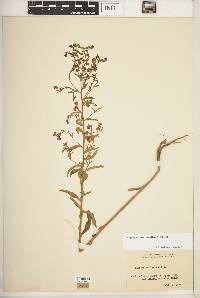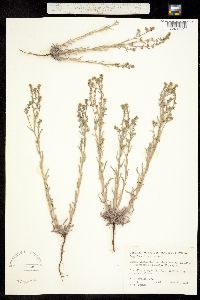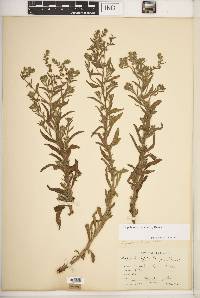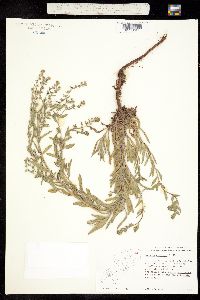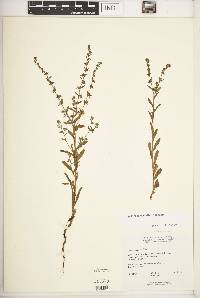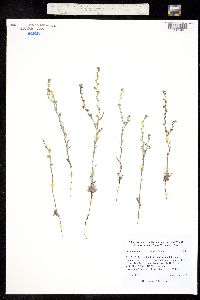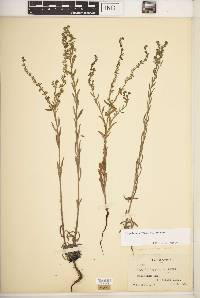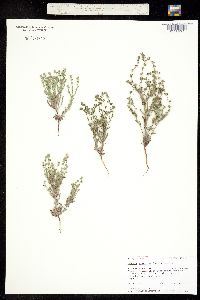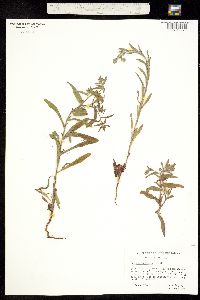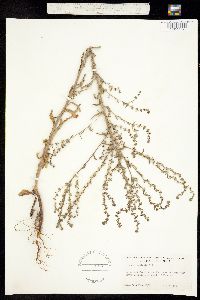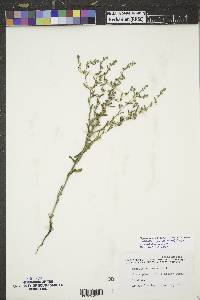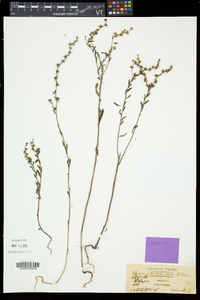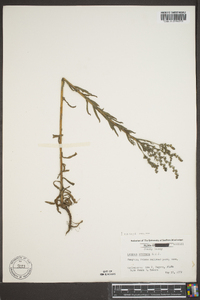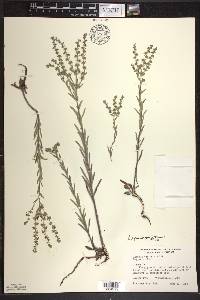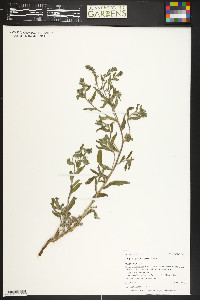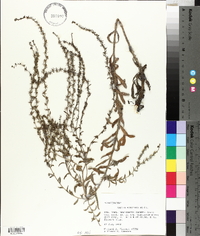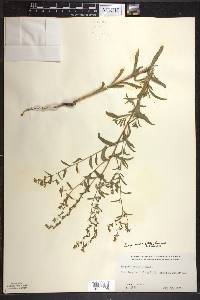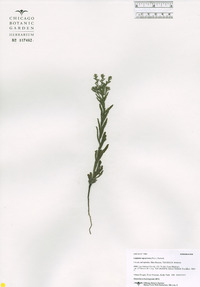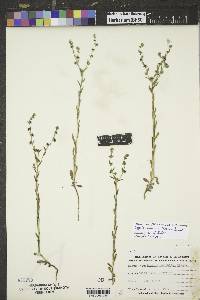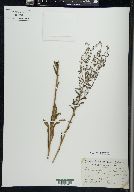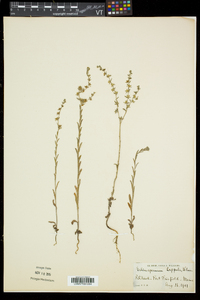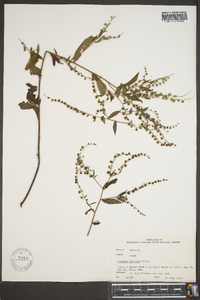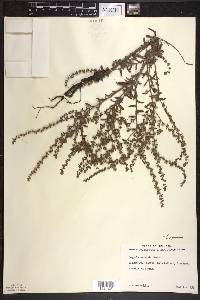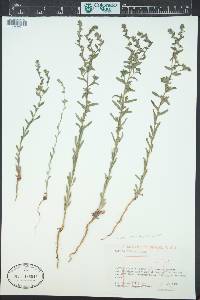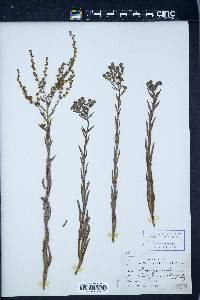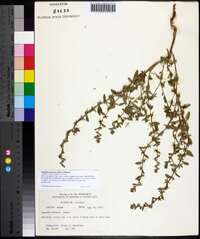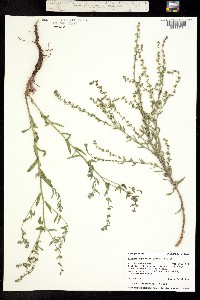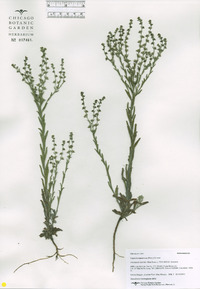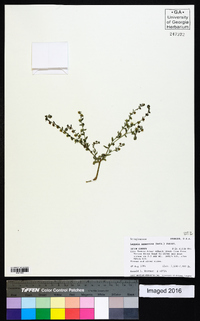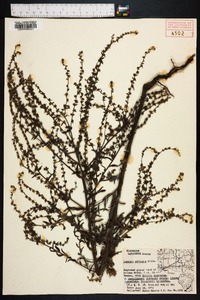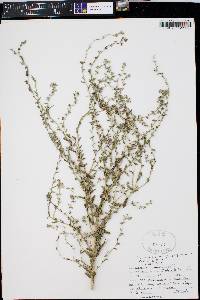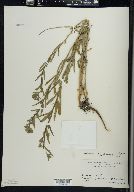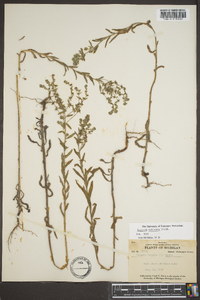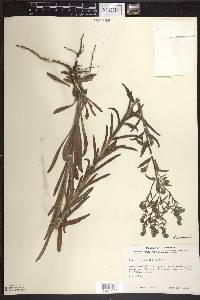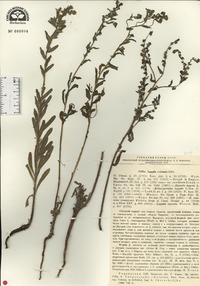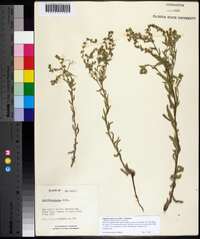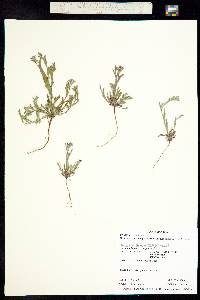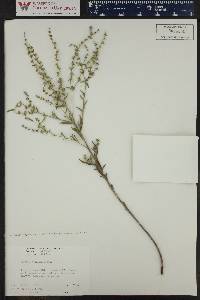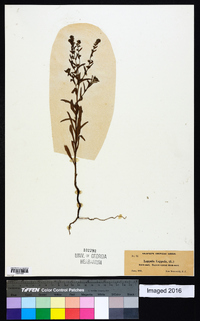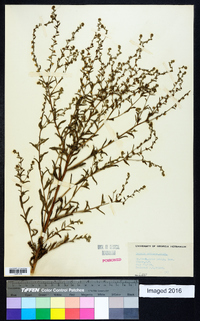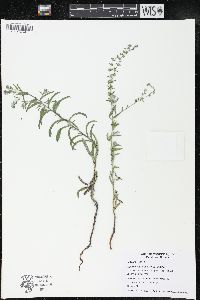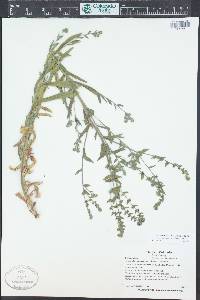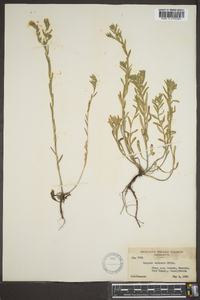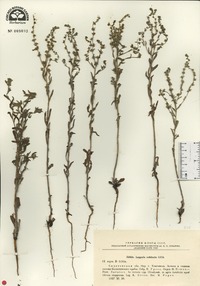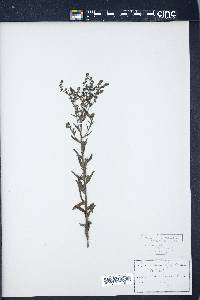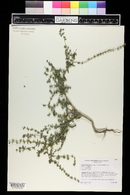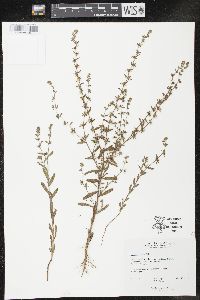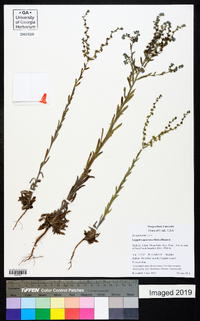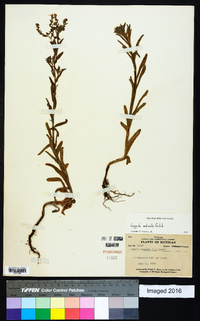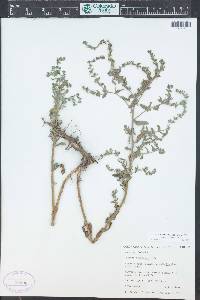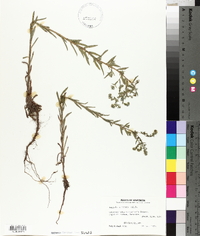Lappula squarrosa
|
|
|
|
Family: Boraginaceae
Bristly Sheepburr, more...European stickseed
[Echinospermum lappula, moreLappula consanguinea , Lappula echinata Gilib., Lappula erecta A. Nels., Lappula fremontii (Torr.) Greene, Lappula lappula (L.) Karst., Lappula myosotis Moench, Lappula squarrosa var. erecta (A. Nels.) Dorn] |
Annual herb 20 - 80 cm tall Stem: erect, rough with appressed hairs, and openly branched upward in the inflorescence. Leaves: alternate, stalkless, ascending, non-toothed, rough-hairy, 2 - 5 cm long, under 1 cm wide, linear to narrowly lance-shaped or oblong, but without obvious lateral veins. Inflorescence: terminal, of numerous, somewhat elongate (5 - 10 cm), rough-hairy, spike-like branches with many, alternate, small, blue flowers on short, ascending stalks subtended by 3 - 10 mm long, linear to lance-shaped bracts. Flowers: many, alternate, short-stalked, blue, small, 2 - 4 mm wide, radially symmetric, funnel-shaped or narrowly tubular with five spreading lobes. Sepals: five, erect to ascending, about as long as petal tube, short rough-hairy, narrow, somewhat lance-shaped with narrowed and pointed tips. Petals: five, but fused for over half their length into a tube about equal to sepals, then separating into five, spreading, relatively short, rounded lobes. At the base of the spreading petal lobes, the throat of the petal tube is blocked by five small projections or appendages (fornices). Stamens: five, attached to inside of petal tube, but not extending past the petal tube. Pistil: with one, four-lobed, superior ovary; and one short style, which arises from between the four ovary lobes and never extends beyond the petal tube, but is often longer than the mature fruit. Fruit: a prickly, 3 - 4 mm tall, about as tall as wide, rounded cluster of four, connected, spiny nutlets subtended by persistent, spreading to recurved sepals terminating 1 - 2 mm long, erect or ascending stalks. The nutlets are somewhat elongate triangular with two fairly flat inner sides, and a rounded convex outer side, which at its two edges (adjacent to inner sides) are two or three rows of prominent, wide based, stiff, barbed or hooked prickles, and across the outer surface there are short, sharp bumps, but no prickles. Similar species: Lappula squarrosa is very similar to L. redowskii var. occidentalis, except that species has only one row of barbed prickles bordering the edges of the nutlets, and the nutlet cluster tends to be longer than wide. Hackelia virginiana is also quite similar, but that species has obvious lateral veins on the leaves, many of the flowers (especially those further along the inflorescence branches) do not have subtending bracts, the fruit stalks curve downward, and the outer surface of each nutlet has many long prickles equal to those along the edges. Species of Lappula are also somewhat similar to Cynoglossum virginianum var. boreale, however, that taxon has some clasping leaves, and the nutlets are easily distinguished as four almost independent egg-shaped sections instead of an egg-shaped cluster. Flowering: May to October Habitat and ecology: Native to the steppes of southern Russia and Siberia, frequent along railroads, also in overgrazed pastures, especially in calcareous soils. Occurence in the Chicago region: non-native Notes: Similar to the common name for Hackelia the species in the genus Lappula are also called stickseeds. This fits both genera well since their fruit have stiff barbed prickles, which allow the fruit to stick well to clothing and fur. Etymology: Lappula derives from the diminutive of the Latin word lappa, meaning bur, in reference to the bur-like fruit. Squarrosa comes from the Latin for "having scales" or "scale-like overlapping leaves or bracts". Author: The Field Museum Stems 2-8 dm, tending to be appressed- hairy, mostly freely-branched above; lvs linear to linear-oblong or linear-oblanceolate, 2-5 cm, usually ascending, sessile, rough-hairy; racemes numerous, eventually 5-10 cm; mature pedicels erect or ascending, 1-2 mm; bracts linear or lanceolate, 3-10 mm; cor blue, 2-3(-4) mm wide; nutlets 3-4 mm, the outer face lanceolate, roughened, surrounded by 2(3) rows of prickles, those of the inner row usually the longer; 2n=48. Native of Eurasia, established as a weed in waste places in much of the U.S. and s. Can., in our range more common northward. May-Sept. (L. echinata; L. lappula) Gleason, Henry A. & Cronquist, Arthur J. 1991. Manual of vascular plants of northeastern United States and adjacent Canada. lxxv + 910 pp. ©The New York Botanical Garden. All rights reserved. Used by permission. From Flora of Indiana (1940) by Charles C. Deam This species has been reported from all parts of the state although my specimens are all from the northeastern part. It prefers a sandy soil and is generally found in ballast along railroads and roadsides, in waste places and fallow fields, and rarely in pastures or open woods. …… Indiana Coefficient of Conservatism: C = null, non-native Wetland Indicator Status: N/A |

